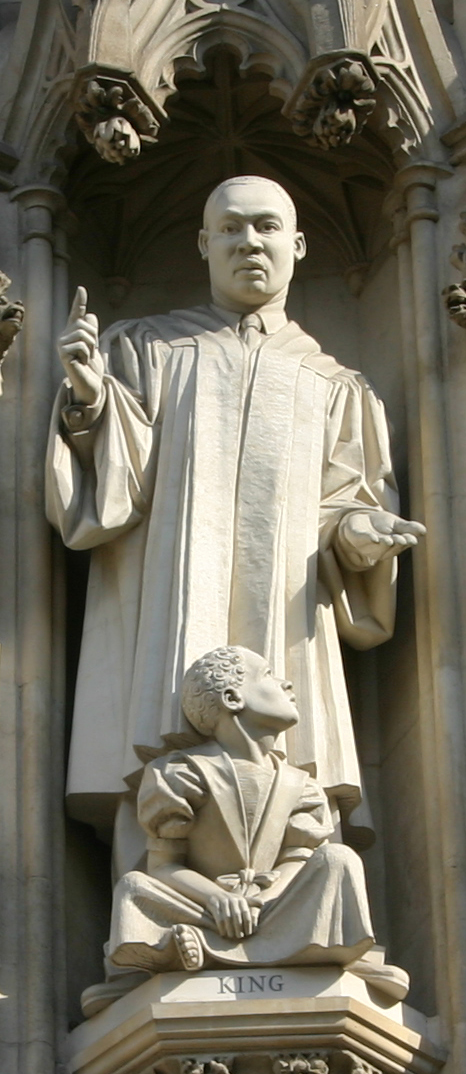Martin Luther King, Jr.
Today, a preacher teaches us about invention. The University of Houston presents this series about the machines that make our civilization run and the people whose ingenuity created them.
It's December, 1956, and I'm at a lecture on the Berkeley Campus. The speaker is a young Baptist minister, a year older than me. He's already spent two years as pastor of a Baptist Church in Montgomery, Alabama. His talk turns out to be scholarly and low-key. It's about the theoretical and theological bases of the Civil Rights Movement. But he also knows his subject in practical terms. He's just riveted the public by organizing a boycott of Montgomery's segregated buses.
This, of course, was Martin Luther King, Jr., giving us all a lesson in creative thinking. He used the tools of reason, literature, and history, as he led us to the heart and meaning of non-violent protest. He did not let his mission deflect him from primary Christian imperatives. I still hear him telling us,
Our aim is as much to deliver the white race from the wrongs of segregation, as it is to deliver the black race. If we forget that, then we've failed.
And, at least for the moment ... before we forgot ... we knew that he really did mean to save us from ourselves. So our pursuit of the inventive mind finally brings us to this strange warrior, wielding the weapons of peace. I heard King engaging the same quality of detachment as a theoretical physicist. But his genius for communication wed abstract thought to reality. Like the great engineers, King molded subtle ideas into a better life. Left brain and right brain became one.
Seven years later, he gathered a quarter-million people before the Washington monument to tell them that he had a dream. That uncanny oration revealed the mystic part of the mind that did so much for America.
You see, invention is a three-part process. The inventor -- any inventor -- must dream. Then must think. And finally must execute. King did all three. He harnessed his dream of racial harmony to powerful abstract and ethical engines. Then his dream rode those engines into a world that was, in large part, delighted and stunned by what he had forged.
It's dangerously easy to make King into an icon -- to remember only the force of his oratory -- to remember his mission and forget his means. When I fall into that error I go back to that young intellectual at Berkeley. Laying out left-brain means for realizing a right-brain dream.
I still hear him urging us along on the journey that eventually took him only to the near side of his Jordan River. But then, don't we all still stand on this side of that lingering divide.
King may've been a great orator of his age. But this dream-driven activist was also a great thinker. We'd all be better for it, if we remembered how that dream of a better world led first to a fully formed intellectual edifice. Only then did it drive action that changed us all for the better.
I'm John Lienhard at the University of Houston, where we're interested in the way inventive minds work.
See the Wikipedia article on Martin Luther King, Jr.

Statue of King in Westminster Abbey, London, England.
Image courtesy of Wikimedia Commons
This is a revised version of Episode No. 371, which first aired in 1990.
This episode was first aired on January 15, 2018